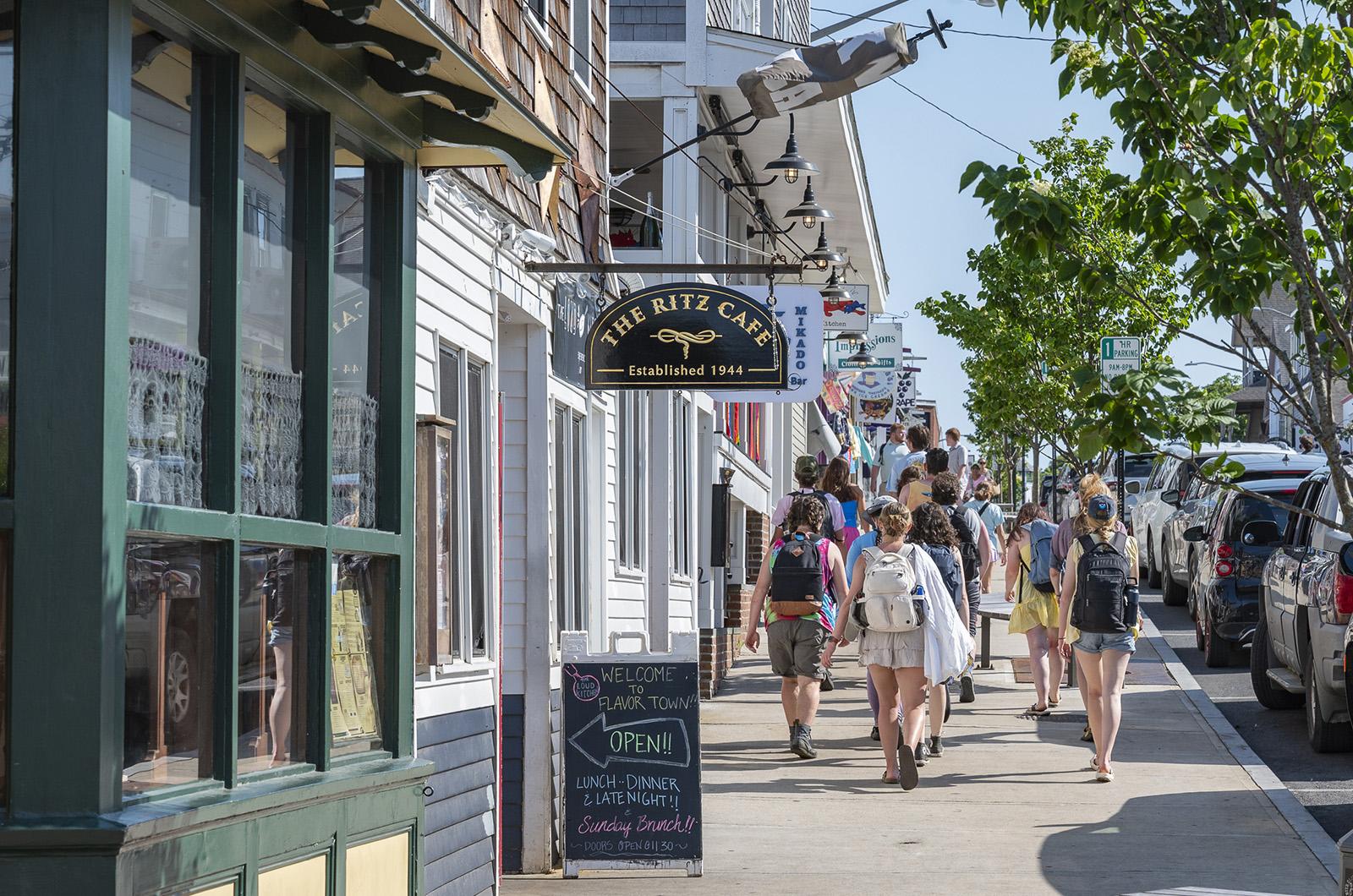Oak Bluffs officials are working to stave off a water shortage as summertime water consumption continues to rise.
Michael Silvia, the Oak Bluffs Water District superintendent, told the select board last month that if changes aren’t made, the town will not be able to add new homes or other buildings to the water system in the coming years.
“If we don’t get another source at some point, then we’re going to be tapped out,” said Mr. Silvia. “It’s on the horizon.”
The water district is working on two projects to increase the resiliency and capacity of the water supply, including a new well source that could bring another 1,000 gallons of water per minute to Oak Bluffs. According to Mr. Silvia, the project will take years to come to fruition.
“It’s tough to say with something that significant of a project, but I think the permitting alone is at least a few years,” he said.
The water district is looking at an area on County Road to use as a new well source. The land has not been acquired, but tests of the water quality are promising.
“The test wells on the site that we’re looking at tested negative for PFAS. We tested these in January,” Mr. Silvia said. “The initial test results for this site show that water quality looks great.”
Over the past 10 years, Oak Bluffs has averaged over 380 million gallons of water a year. In the last two years, the town has climbed to more than 400 million gallons of water annually. Mr. Silvia said the increase is due to a combination of factors, including irrigation and more visitors.
The town has had a summer water ban since 2006. The ban states that customers who live at odd-numbered addresses may only use outdoor water on odd-numbered calendar days, while customers at even-numbered addresses may only do so on even-numbered calendar days.
“People come down in the summer and they aren’t thinking about how much water they’re using. They’ll take as many showers as they want,” he said. “We have a mandatory water ban, but the majority of houses are being rented…they don’t really know or care, I think.”
Adding new wells will take time. Mr. Silvia expects permitting will be the biggest hurdle and the process could take about six years.
In the meantime, the water district is working on another project to help prevent the town from reaching its limit.
Oak Bluffs has five wells, but only four can run at a time due to the way they are built. When well number five is running, the water runs through the building where number four stands, making it impossible to use both at once. Mr. Silvia said that the water district is working on a project to uncouple the wells so both can be used at once.
“This would happen a lot sooner than a new well would,” he said.
He added that the Department of Energy gave a timeline of about a year for the project permits to be finalized, but he is hopeful it will take less time. Once the wells are adjusted to run at the same time, they will bring an additional 800 to 1,000 gallons of water per minute to the town’s supply.
Oak Bluffs is one of three Island towns that has a municipal water company. Both the water superintendents in Edgartown and Tisbury are also looking to strengthen their water systems.
Edgartown is also developing a new well source. According to the town’s water superintendent William Chapman, the town is four years into a 10-year plan.
“Developers do not move quickly on approving the development of a new well,” Mr. Chapman said.
Though the town is not worried about reaching capacity, it started the process early because of how long it takes and because he expects the population to continue to grow. Mr. Chapman added that he wants to have back ups in case a well source has to go down for repair.
Tisbury is not concerned about having enough well sources, according to James Cleary, the town’s water superintendent. The only issue Tisbury currently has is the capacity of its storage tank.
“It’s harder for our tanks to keep up but they’re fine for the moment,” Mr. Cleary said of the tanks during peak use, which is 2 a.m. to 5 a.m. He said that the amount of water in the reserve gets lower than the ideal, but is not a danger or cause for immediate concern.
In Oak Bluffs, Mr. Silvia didn’t know when his town would hit its capacity, but felt that the new efforts would keep water flowing.
“I think it all depends on consumption and what projects are coming down the line,” he said. “My big thing is if we can get another source and separate these two wells and a new tank, I think the town in general will be in good shape for the foreseeable future.”






Comments (2)
Comments
Comment policy »